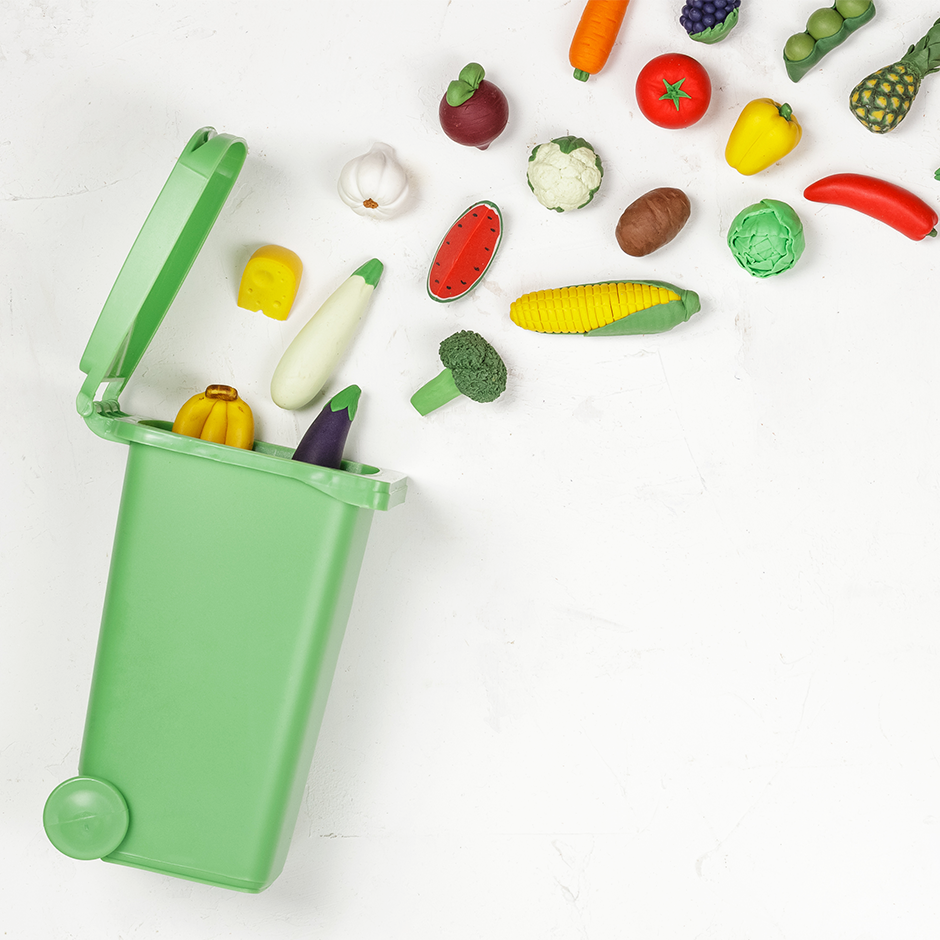
An astounding 30% of food from American grocery stores is trashed annually, amounting to a jaw-dropping 16 billion pounds! Worldwide annually, 931 million tonnes of food waste are produced globally from the hospitality sector, retail outlets, and households. These discarded edibles total up to the unbelievable sum that’s twice as much as those made from sales. It truly is an alarming waste of resources and money.
Unbelievably, if the amount of food humans waste were a country, its greenhouse gas emissions would be so severe that it would land in third place on the list of highest-emitting nations. This is detrimental to the environment and greatly strains already taxed resources such as waste management systems. It also increases the levels of global food insecurity. These issues compound even further when looking at the three great planetary crises: climate change, biodiversity loss, and pollution.
Obstacles to Addressing Food Waste in Retail
With an average of 12 kg per person, 9% of all food waste comes from restaurants and other food services. With consumers at their doorsteps, whether physically or virtually, retailers are constantly selling various food items. This gives them significant clout to contribute to the battle against food waste. Nevertheless, there remain several distinct obstacles that they must overcome along the way:
- Customers expect a wide selection of high-quality food, putting tremendous pressure on inventory management and purchasing decisions.
- Tweaking stocking practices or product sizes is tricky, particularly when they are deeply connected with their brand identities.
- The constant demand for top-tier freshness pushes retailers to throw away edible food items that may still be safe but are deemed past their prime.
Retailers generate a staggering 10.5 million tons of surplus food annually, with over one-third being dumped in landfills or incinerated as waste. Produce takes up the most significant portion (32.6%), followed closely by dairy & eggs (29.3%) and dry goods (14.8%). Surprisingly, almost half of this figure can be attributed to confusion surrounding freshness date labels alone! With a startling 30% ending up in landfills, it’s more important that retailers figure out how to make significant progress in reducing food waste.
The bleak reality is that archaic inventory systems relying on immovable, rule-based demand forecasting and restocking can no longer keep up with the rapidly changing needs of fresh products. This isn’t just an inconvenience; it’s a complex supply chain puzzle. The status of items shifts daily, and each product has its own shelf life in addition to differences between stores. It would be nearly impossible to manually monitor food waste in retail or through employee observations alone – making traditional methods obsolete!
How AI and Computer Vision Can Help Reduce Food Waste in Retail
To tackle this issue, retailers must upgrade their current systems and replace them with modernized ones. Automated solutions can further supplement these efforts by providing access to real-time data, making it possible for decision-makers to accurately measure and monitor food waste. AI and Computer Vision have become the go-to technologies for creating more accurate demand forecasts and optimizing stocking decisions.
The following are some of the ways AI and Computer Vision can help reduce food waste in retail:
Inventory Management
AI-powered systems can analyze data on sales patterns and predict which products will likely spoil soon. Retailers can use this information to optimize stocking levels and reduce overstocking, a major contributor to food waste in retail stores.
Quality Control
Computer vision-based systems can be used to inspect fruits and vegetables for defects or signs of spoilage. This allows retailers to remove spoiled items from their shelves before they are purchased.
Predictive Maintenance
AI-based systems can predict when equipment, such as refrigeration units, will fail. As a result, retailers can schedule maintenance and repairs before equipment failure leads to the spoilage of perishable products.
Smart Shelving
Smart Shelving can use computer vision to monitor products and detect when they need to be restocked or rotated. This helps ensure that products reach customers before they expire.
Personalized Offers
AI can analyze customer data and predict which products they are likely to purchase. Retailers can use this information to create targeted promotions that reduce the risk of unsold products going to waste.
Cognitiwe’s AI and Computer Vision Solutions

Cognitiwe’s AI and computer vision solutions utilize data from images gathered throughout the day at retail stores. The company’s Machine Learning algorithms can accurately track stock changes of products over time, the freshness of foods on display for extended periods, and even predict when such foods begin to spoil.
With the sophisticated image processing algorithms developed by Cognitiwe, retailers can keep track of fresh produce in display and their respective quantities. If the inventory drops below a certain level, managers receive alerts immediately.
Make the most of Cognitiwe’s AI and computer vision technologies to get ahead of food waste in retail. Our solutions provide insight into stock levels and display times, giving you peace of mind that your fresh foods remain available for customers when they need them.
